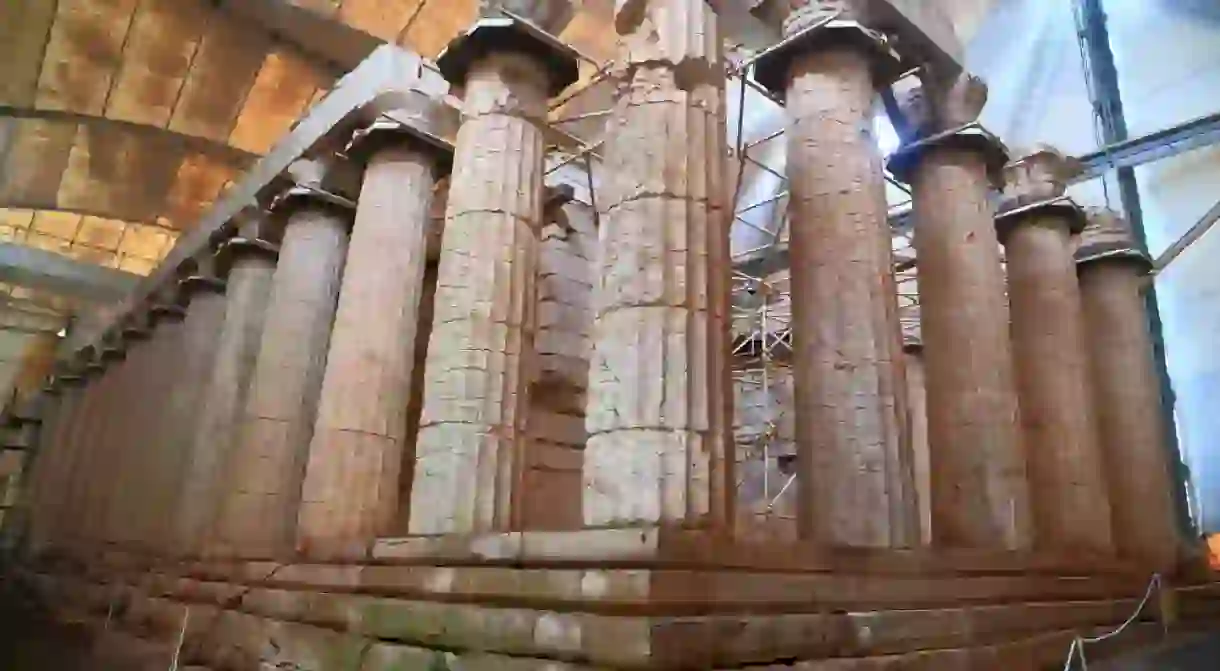Why You Should Visit the Temple of Apollo Epikourios, Greece's Ancient Hidden Wonder

Tucked away in the northeastern valley of Messinia in Peloponnese stands an ancient temple that few people know exist. The Temple of Apollo Epikourios, located at Bassae, is actually one of the most impressive temples in Greece, thanks to its well-preserved state and its unique architectural features. Here is why you should definitely plan a visit to see it.
Bassae is an architectural site in northeastern Messinia, home to the majestic temple of Apollo Epikourios (or Epicurius), which was built between 450 and 400 BCE. Its well-preserved state is thanks to the fact that it was isolated from major ancient cities, and not subject to acid rains in modern times. It is, therefore, one of the most studied ancient treasures in Greece.
It was the first ancient temple inscribed in the UNESCO World heritage list in 1986. This temple is also considered one of the most interesting, as it features a series of innovative architectural concepts both inside and out. In fact, 2nd century CE traveller and geographer Pausanias thought it was one of the finest temples in the Peloponnese region in terms of beauty and harmony.

Discovery in modern times
Dedicated to Apollo Epikourios (Apollo the Helper), the temple is thought to have been constructed by Iktinos, the architect of the Parthenon in Athens. Located at around 1100 meters high, on the slopes of Mount Kotylion, it was rediscovered by chance by French architect J. Bocher in 1765. However, he was murdered by bandits when he returned to the site. In the 19th century, some of the site’s architectural artifacts, including the frieze, were removed by the British with the permission of the local Ottoman ruler, Veli Pasha. These can still be seen at the British Museum in London, and it was only in the early 20th century that official excavations by the Greek Archaeological Society were carried out. Today, the temple is covered with a white tent protecting it from the elements, as conservation works are underway.

Striking architectural features
This classical temple bears the three types of architectural orders of classical times, including the Doric order for its exterior peristyle, Ionic for the naos (or sanctuary), and a Corinthian column used to mark the entrance to the inner sanctum. It is actually possible for visitors to walk within the temple’s perimeter, something unprecedented in Greece, where many temples are off-limits to the public.

These design elements inspired many contemporary architects, who have reproduced some of these features in their works, including the Fellows’ Dining Hall with a single Corinthian column at Gonville and Caius College at Cambridge University in England, and the Church Hill Bank in Richmond, Virginia, built by American architect Bascom J. Rowlett, with a main entrance framed by two columns in the Bassae Ionic order.
The temple, which was used since its construction until the Roman period, was abandoned, leaving its roof to decay and eventually collapse. Nonetheless, thanks to its unique architectural features, this stunning temple is a stellar example of a distant past and certainly deserves more attention. Combine a visit to the temple with a picnic so you can admire the tranquil surroundings and explore the natural wonders nearby.














